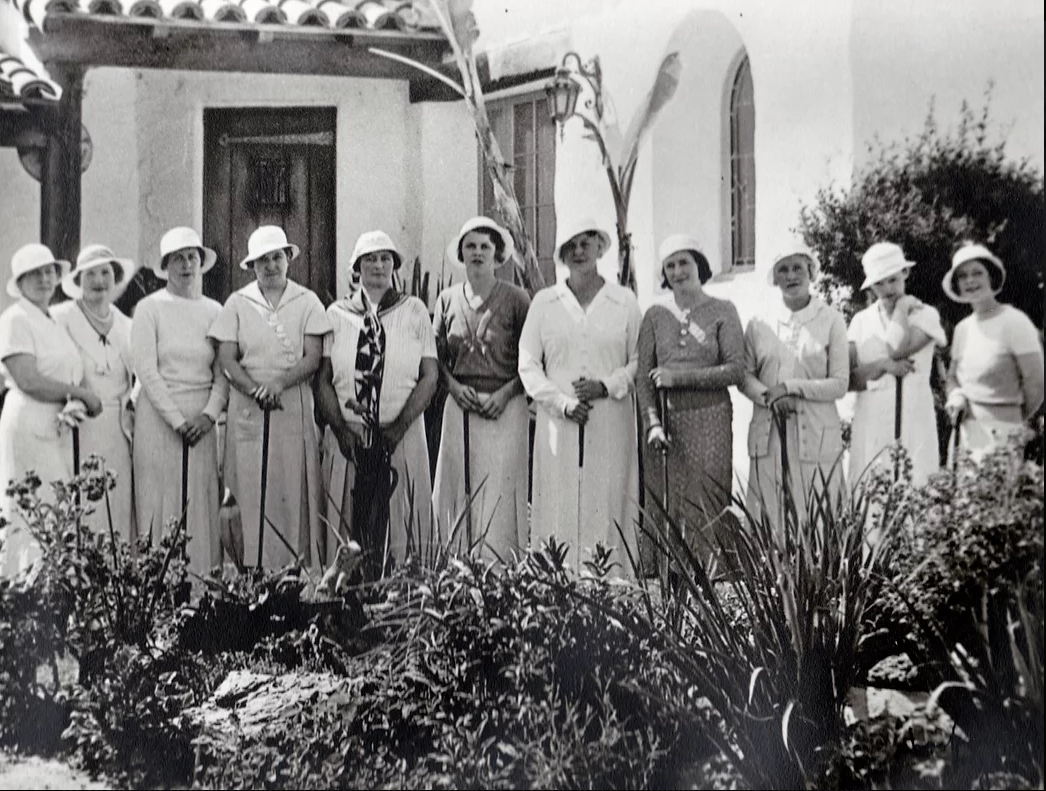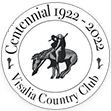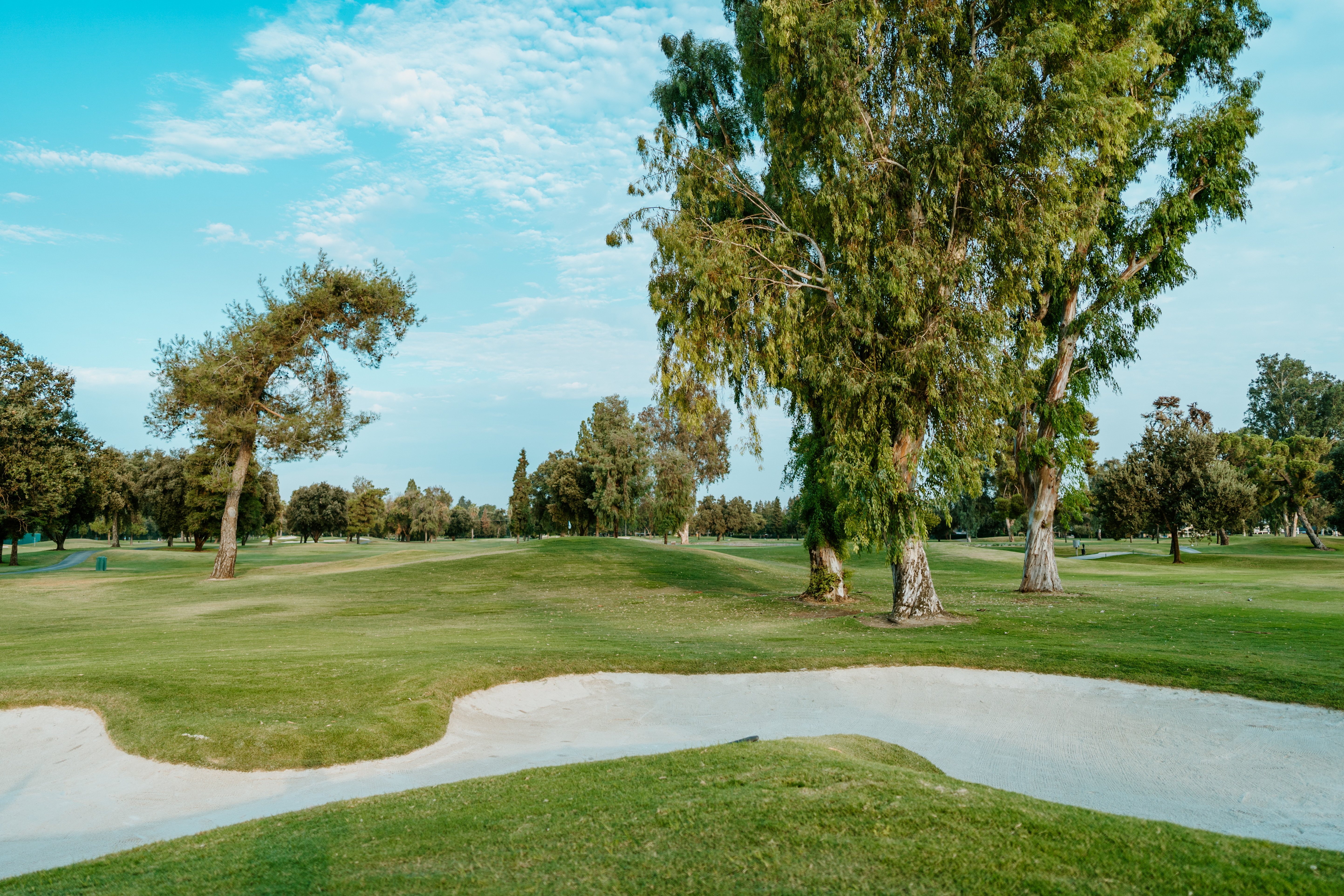History of Visalia Country Club
On January 27, 1922, a meeting was held in the Visalia Municipal Auditorium for the purposes of organizing a golf club. Golf was neither as well-known nor as popular at the time as it is today. In point of fact, the gentleman, Mr. Harvey V.E. Gilmer, who spearheaded the effort, had never even played the game! He had, however, watched the game with his college friend, Mr. Wrigley, over on Catalina. Mr. Gilmer’s enthusiasm was soon matched with true passion for the sport, resulting in his attaining the Club Championship on four separate occasions over the next 20 years!

The lack of awareness of the sport made it something of a challenge to arrange the initial subscriptions, but upon collecting twenty-five hundred dollars, property was leased from Dick Hyde. The first membership sold for fifty dollars, and the dues were five dollars per month!
With some of the proceeds left over after leasing the property for the course, the Club was able to use $400 to procure their first groundskeeping equipment – a team of horses and a hay mower!
The game of golf and the Club would be greatly different from what we are familiar with today. Visalia Golf Club began with three holes, still existing today as numbers 11, 12 and 13. "Greens" were oiled sand, which needed smoothing before every putt. The tee areas were asphalt slabs. Wooden tees were unknown until 1927 – prior to this innovation, players formed "tees" with wet sand to elevate the ball in the teeing area. In 1926, six more holes were added and the sand greens were replaced with grass greens.
The design of our fairways was determined in part by the famous Jennings Ditch which wanders throughout the entire length of the course. In 1950, Mill Creek, which supplied water for the Jennings Ditch, was diverted, leaving a dry ditch which is still visible throughout the course and particularly along the right side of the #9 fairway and the lake between #17 and #18. By 1952, an additional nine holes were completed, for a total of eighteen holes.
In 1924, Mr. Orval Overall, a former two-time World Series Champion with the Chicago Cubs, was elected President of the Club, and served until 1933. Mr. Overall was born in Farmersville, was a standout athlete in football and baseball at Cal, as well as something of a disappointment to his well-to-do father, the owner of the Palace Hotel and citrus interests, when he dropped out of Cal to pursue his professional baseball career! There is no record to indicate whether his success in the major leagues redeemed him in his father’s eyes!
In early 1926, the Membership decided to expand the course to nine holes and to plant grass greens to replace the “sand” greens. They also started the installation of our first irrigation system, with the drilling of a well and the gift of a pump from the Byron Jackson Pump Company.
Later in the year, a Clubhouse Building Committee was formed; plans were drawn up and accepted. W.R. Spalding (whose house still stands today downtown and serves as one of Visalia’s two B&B’s) donated lumber for the new Clubhouse. Members were asked to provide additional donations, and were enthusiastically willing – even non-members donated! The original Clubhouse and greens had been constructed for a cost of $6400!
The original Clubhouse measured a whopping 16 feet by 24 feet, and, along with a good portion of the Members’ golf clubs, burned to the ground in 1927. It was re-built the same year! The Roaring 20’s, indeed!
The first Women’s Champion was Suzy Reynolds in 1923. Immediately thereafter, in 1924, the first Women’s Division of the Club was formed. The Women’s Club continues to meet today on Wednesdays, and as in the early days enjoys luncheon following their rounds.
The 1930’s were a challenge for the Club, as they were for the remainder of the area and the entire nation. In 1932, John Keogh was hired as Golf Professional & Club Manager, positions he held for over 32 years. In 1933, Mr. J. Thomas Crowe, a young attorney, was elected to serve as Club President, and held that position for over 30 years. It is a true testament to the skills of these gentlemen that Visalia Golf Club was able to survive the lean years of the Depression. It was during Mr. Crowe’s early leadership that the following committees were first instituted: Handicap, Sports, House, Greens and Membership.
In April 1942, during World War II, Bob Hope, Bing Crosby, Johnny Weissmuller and an outstanding amateur from Los Angeles, Johnny Dawson, played an exhibition golf match at the Club. While no records survive to document the victor of the match, the real winner was the Visalia Chapter of the American Red Cross, to whom the proceeds were donated.
In 1950, the official name of the Club was changed to Visalia Country Club. In 1952, the Club added nine more holes to reach our present eighteen. In 1953, a new Clubhouse was built at the site of today’s Snack Bar – the cost of the new Clubhouse increased from that of the original to a reported $120,000, and was entirely financed voluntarily by donations from the Members. The Fabulous Fifties appear to have given the Roaring 20’s a run for their money! The 1950’s also saw the planting of some 4000 trees throughout the course, a far-sighted decision from which we still benefit today!
In 1988, the Membership of VCC voted to construct a new, modern Clubhouse. Ground was broken in spring, 1989, and, construction completed, the new building was dedicated in 1990.
After serving as the site of hundreds of Club social events and community activities over the next decade, the Board of Directors approved a significant remodel in the 2006. This renovation preserved the layout of the Clubhouse, while creating a more traditional appearance. In 2010 and 2011, the Club invested in a renovation of our kitchen and a renovation of our Golf Shop. In 2013, the Club again invested in our future by rebuilding all of the above-ground components of our Course Irrigation system.
Until 2012, Visalia Country Club was proud to be the location of the oldest Valley Oak in Visalia. After 260 years of service to our area's environment, it unfortunately became too ill and weak to survive.

